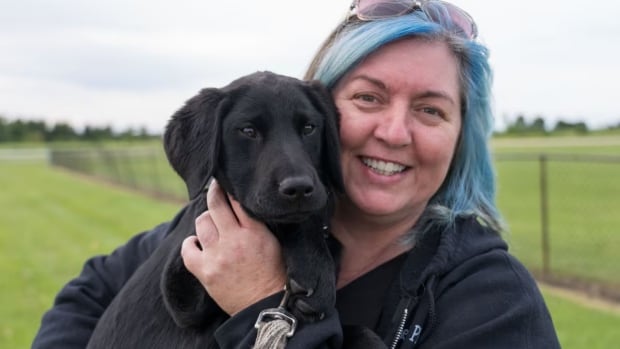Aamjiwnaang First Nation in Sarnia, Ont., is calling on all levels of government to shut down a facility after data indicated high levels of a harmful chemical were present in the air.
In a news release, the First Nation said it sent its employees homes Tuesday as they were complaining of headaches, nausea and dizziness — symptoms associated with high levels of benzene.
According to preliminary data from pollutant monitors in the region, multiple times this month, the air quality was recorded as poor and moderate from benzene levels.
The First Nation blames the pollution on the operations of INEOS Styrolution, which produces chemicals used in plastic and rubber products. The facility is just one of many industrial companies in an area that environmental advocates have called “chemical valley.”
Aamjiwnaang’s band office is down the street from the INEOS facility.
“Immediate reforms are needed to address the systemic racism which pervades the environmental protection regime and allows industry proponents, such as INEOS, to continue with ‘business as usual,'” reads part of the statement released by the First Nation.
Benzene, according to the World Health Organization, is associated with a range of “acute and long-term adverse health effects and diseases,” including cancer and blood issues.
Company says it upholds safety protocols
INEOS Styrolution told CBC news in an email Wednesday that it understands Aamjiwnaang First Nation’s concerns and is “carefully reviewing this data and any concerns.”

It said that site works closely with the Ministry of the Environment, Conservation and Parks to “ensure we stay within the prescribed emissions limits.”
“We uphold stringent environmental and safety protocols to meet all regulated standards” set by the ministry, the company said. “Our dedication to these standards underscores our unwavering commitment to safeguarding our environment and the people within it.”
CBC News was also waiting for comment from the ministry.

In an email, Environment and Climate Change Canada directed CBC News to a statement it released in February.
The statement says the government is working on draft regulations to reduce industry emissions of harmful volatile organic compounds (VOCs), which include benzene. The public will be able to weigh in on these until April 24.
The regulations would “require facilities to install vapour control equipment on tanks and loading operations, as well as to inspect and repair that equipment for defects on a regular basis.”
In its statement, the government thanked Aamjiwnaang First Nation for “their advocacy and research regarding health effects in their community caused by exposure to VOCs from industrial facilities.”
‘We are screaming,’ says councillor
The industrial area in the region has longstanding concerns over pollution due to the number of industrial plants.
The First Nation said that recently, it seems the problem has been getting worse.
“Despite continuous fence line monitoring and oversight from both the provincial and federal governments, the level of benzene being reported within Aamjiwnaang’s monitoring stations continually exceeds regulated standards and, more alarming, appears to be increasing,” reads its news release.
Aamjiwnaang Coun. Janelle Nahmabin told CBC News that she feels her voice as an elected official isn’t being heard.
“We are screaming that this is what happens with allowing things to continue as normal. They can’t. Everybody has to become aware of the effects of pollution, how it affects us, because if we are not advocating, who else is going to advocate for us?” said Nahmabin, also known as Red Cloud Woman and part of the Bear Clan.
Nahmabin said she also heard from a parent who brought their child to the hospital recently as a result of symptoms they believe are the result of high benzene levels.
She also said this recent spike in benzene in the air has impacted a ceremony. A sacred teepee is up to remember someone who had died, but the ceremony was halted because of concerns over air quality safety.
Benzene a ‘concern’ in Sarnia: government reviews
Nine air monitoring stations are set up throughout Sarnia, which are operated by the provincial government, Aamjiwnaang First Nation and the Sarnia-Lambton Environmental Association.
The data from these feeds a real-time website called Clean Air Sarnia and Area, which the community uses to monitor pollutant levels. The site includes a disclaimer that since the data is in real time, it might not be the most accurate and is considered “unverified.”
The website says the Ministry of the Environment may alert the community when pollutant concentrations are “very poor” and fall above the Ambient Air Quality Criteria.
A Ministry of the Environmental report released in March on an air exposure review in Sarnia found benzene levels are a “concern” in some areas due to industrial emissions, specifically because benzene could possibly increase the risk of leukemia, a blood cancer.

The review said steps should be taken to reduce levels of benzene “as much as possible,” particularly in south Sarnia and the Aamjiwnaang First Nation reserve.
“We keep waiting for the ministry to show up for us, and it’s not happening,” Nahmabin said.
As this situation unfolds, Aamjiwnaang’s environment co-ordinator, Cathleen O’Brien, is in Washington, D.C., with the federal government — at the National Environmental Justice Conference — speaking on a panel about this very issue.
O’Brien told CBC News in a phone call that as she was about to speak, her phone was going off from people back home to talk about what they’re experiencing.

Despite alerts going to community members when pollutants are high, O’Brien said they feel the limits decided upon “are not protective of human health” and don’t “take into account the cumulative impact” of repeated exposure to these chemicals.
“Consider choosing people over profits,” she said.






